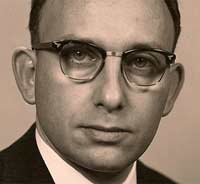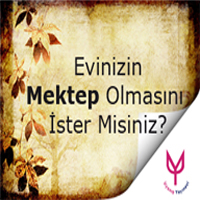|
|





N. Joseph Woodland
barkod sisteminin mucidi
1921 yılında doğdu. 1951 yılında IBM firmasında çalışmaya başlayan Woodland, 1970'lerde IBM ekibiyle birlikte, market sahiplerinin ödeme işlemini otomatikleştirme ve hızlandırma ihtiyacına cevap veren lazer tarayıcılı barkod okuma sistemini buldu. IBM daha sonra evrensel ürün kodu teknolojisi için standart bir barkod geliştirdi.
26 Haziran 1974 tarihinde ABD'nin Ohio eyaletindeki Troy şehrinde Marsh Süpermarket'in kasasında işlenen bir paket sakız, dünyada evrensel ürün barkoduyla satılan ilk ürün oldu. 2012 yılında öldü.
ENGLISH BIOGRAPHY
Woodland was born in Atlantic City, New Jersey on September 6, 1921 the elder of two boys.
After graduating from Atlantic City High School, Woodland went on to earn his Bachelor of Science in Mechanical Engineering (BSME) from Drexel University in 1947.[3] During his military service in World War II, Woodland worked as a technical assistant with the Manhattan Project in Oak Ridge, Tennessee. From 1948-1949, Woodland worked as a lecturer in mechanical engineering at Drexel.
In 1948 Bernard Silver, a fellow Drexel Institute of Technology grad student with Woodland, overheard a supermarket executive asking the dean of students to figure out how to capture product information automatically at checkout. The dean turned down the request, but Silver went on to mention the problem to Woodland. After working on some preliminary ideas, Woodland was persuaded that they could create a viable product.
Woodland took some stock market earnings, quit his teaching job and moved to his grandfather's Florida apartment. While at the beach, Woodland again considered the problem, recalling how with Morse code, dots and dashes are used to send information electronically, then started to draw dots and dashes in the sand similar to the shapes used in Morse code. After pulling them downward with his fingers, producing thin lines resulting from the dots and thick lines from the dashes, he came up with the concept of a two-dimensional Morse code, and after sharing it with Silver and adapting movie soundtrack technology, they applied for a patent on October 20, 1949, receiving U.S. Patent 2,612,994 ("Classifying Apparatus and Method") on October 7, 1952, covering both linear and circular bullseye printing designs.
Woodland was employed by IBM in 1951, and although Woodland and Silver wanted IBM to develop the technology, it wasn't commercially feasible, so they sold the patent to Philco in 1952 for $15,000, who sold it to RCA in 1952. RCA went on to attempt to develop commercial applications through the 1960s until the patent expired in 1969.
After RCA interested the National Association of Food Chains in 1969, and they formed the U.S. Supermarket Ad Hoc Committee on a Uniform Grocery Product Code, rival IBM became involved in 1971, finding out about Woodland's work and transferring him to their North Carolina facilities, where he played a key role in developing the most important version of the technology, the Universal Product Code (UPC), beating RCA in a competition.
HABER
Barkod sisteminin mucidi Woodland hayatını kaybetti
Zaman 14 Aralık 2012
Mağaza ve marketlerde tüm ürün bilgilerini otomatik kaydeden barkod sisteminin mucitlerinden Norman Joseph Woodland, 91 yaşında hayatını kaybettiği.
Woodland'ın kızı Susan Woodland yaptığı açıklamada, babasının ilerlemiş yaşı ve Alzheimer hastalığının etkileri nedeniyle New Jersey'de yaşamını yitirdiğini söyledi.
Ünlü mucitin barkod çalışaması, arkadaşı Bernard Silver ile öğrenim gördükleri Drexel Üniversitesi'ne gelen bir market zinciri sahibinin, kasada tüm ürün bilgilerini otomatik kaydedecek bir sistem geliştirilmesini istediğini öğrendikten sonra başlamıştı. Makine mühendisi olan Woodland, bildiği tek kod olan Morse kodu ilkesiyle çalışan ve tarayıcıya okutulabilecek bir etiket düşündü. Morse kodundan tek farkı, noktalar yerine inceli kalınlı çizgiler kullanılması olacaktı.

|
Siz de biyografi.net'te yer alabilirsiniz
"
İyi ki, biyografi.net var!" |
|



